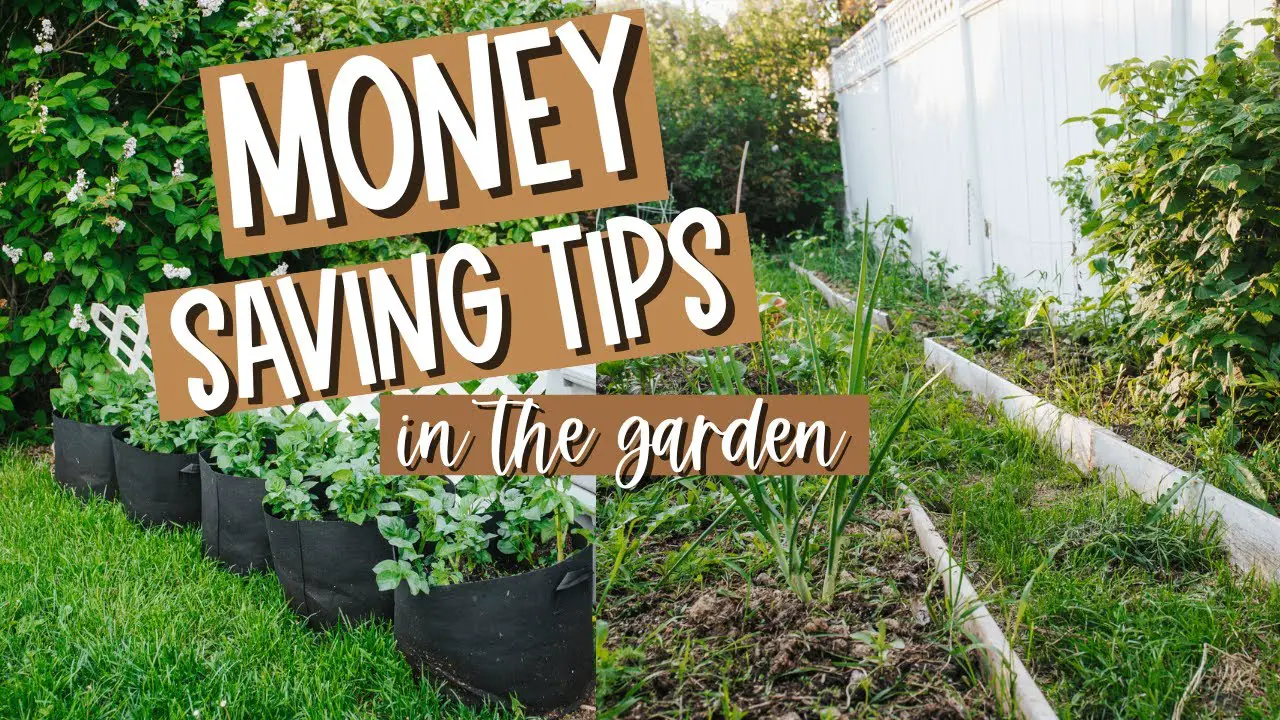Introduction
Welcome to FrugalDude.org! In this article, I will share with you 10 frugal gardening tips that will help you save money while growing your own food. Frugal gardening is a way to enjoy the benefits of gardening without breaking the bank. It’s all about being resourceful and making the most out of what you have.
What is frugal gardening?
Frugal gardening is a practice that focuses on maximizing resources and minimizing expenses. It involves using cost-saving techniques, such as reusing materials, making homemade fertilizers, and starting plants from seeds instead of buying expensive seedlings. By being mindful of our spending and finding creative ways to save money, we can enjoy the beauty of gardening without burning a hole in our wallets.
Benefits of frugal gardening
Frugal gardening not only helps us save money, but it also provides numerous benefits. Firstly, it allows us to have more control over what we eat. By growing our own food, we can ensure that it is free from harmful chemicals and pesticides, resulting in healthier and tastier meals. Additionally, gardening is a great way to reduce stress and stay connected with nature. It provides a sense of accomplishment and satisfaction when we see our efforts bloom into beautiful, productive plants.
Why grow your own food?
Growing your own food is not only a frugal option, but it also comes with several advantages. Firstly, it promotes sustainability and helps the environment. By reducing the need for transportation and supporting local agriculture, we can decrease our carbon footprint. Secondly, growing your own food allows you to enjoy fresh and nutritious produce that is harvested at its peak ripeness. It doesn’t get any better than picking a ripe tomato straight from your garden and savoring its delicious flavor.
In the following sections, I will discuss 10 frugal gardening tips that will help you save money and make the most out of your gardening journey. From composting to utilizing rainwater, these tips will set you on the path to success while keeping your budget intact. So, let’s get started and discover how frugal gardening can be both rewarding and cost-effective.
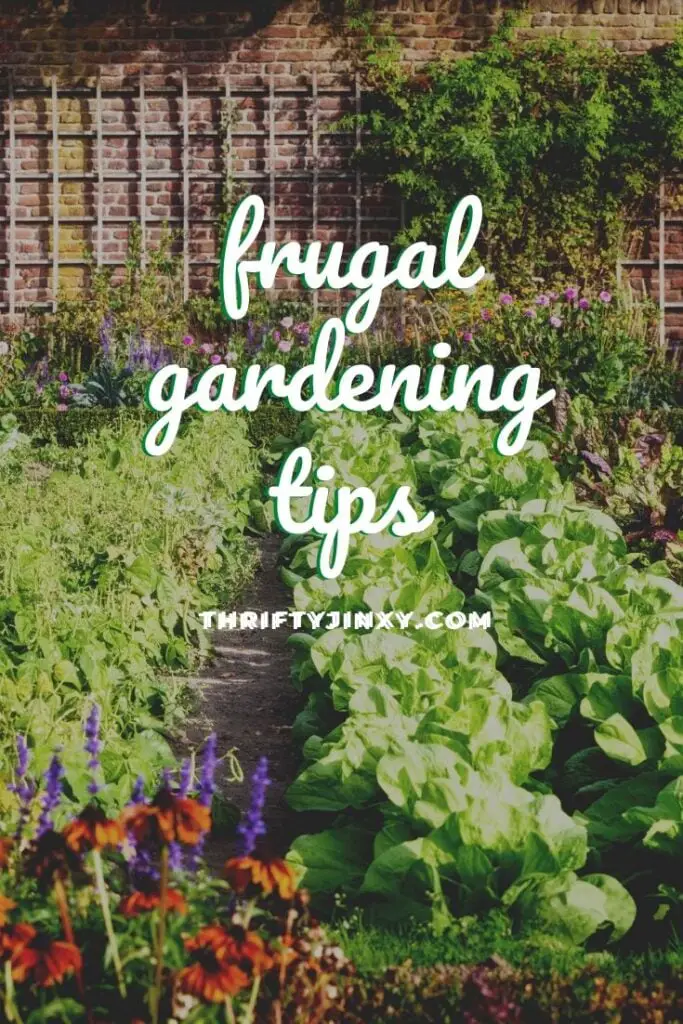
Planning Your Frugal Garden
So, you’ve decided to start a frugal garden to save money and enjoy the satisfaction of growing your own food. Well, congratulations! Gardening can be an incredibly rewarding and cost-effective way to put fresh produce on your table. But where do you begin? Don’t worry, I’ve got you covered. Let me walk you through the first steps of planning your frugal garden.
Assessing available space
The first thing you need to do is assess the available space you have for your garden. Do you have a small backyard or just a tiny balcony? No worries, even a small space can yield an impressive harvest. Take a look at the available sunlight, soil quality, and drainage in your chosen area. Knowing these factors will help you determine what kind of plants will thrive in your space.
Choosing the right plants
Once you’ve assessed your space, it’s time to choose the right plants for your frugal garden. Consider growing fruits, vegetables, or herbs that you regularly use in your cooking. These are the plants that will give you the most bang for your buck. Look for varieties that are known to be productive and easy to care for, especially if you’re a beginner gardener. This way, you can maximize your harvest without spending hours and hours tending to high-maintenance plants.
Creating a gardening budget
Now that you know what you want to grow, it’s time to create a gardening budget. Determine how much money you’re willing to spend on seeds, soil amendments, tools, and other necessary supplies. Consider starting seeds indoors or buying them in bulk to save even more money. You can also re-purpose items you already have, such as using old containers as planters or creating your own compost. By setting a budget and finding creative solutions, you’ll be surprised at how much money you can save.
Remember, planning is key to a successful frugal garden. By assessing your available space, choosing the right plants, and creating a gardening budget, you’ll be well on your way to growing your own food and saving money in the process. So, put on your gardening gloves and get ready to reap the rewards of your frugal garden!
Cost-Effective Soil Preparation
As a frugal gardener, one of the most important aspects of saving money is soil preparation. By properly nourishing and conditioning the soil, you can create a thriving environment for your plants without breaking the bank. In this section, I will share three cost-effective soil preparation techniques that will help you grow a bountiful garden without spending a fortune.
Composting at home
Composting is a fantastic way to reduce waste and create nutrient-rich soil for your garden. Instead of throwing away your kitchen scraps and yard waste, you can transform them into homemade compost. Simply collect items such as fruit and vegetable peels, coffee grounds, and grass clippings, and layer them in a compost bin or a designated area of your garden. Over time, these organic materials will decompose and turn into nutrient-dense compost, which can be used to enhance the health and fertility of your soil.
Using organic fertilizers
When it comes to fertilizing your plants, opting for organic options can be both environmentally friendly and cost-effective. You don’t need to spend a fortune on commercial fertilizers when there are plenty of natural alternatives available. For example, you can create your own compost tea by steeping compost in water and then using it to water your plants. Additionally, other organic options like fish emulsion or bone meal can provide essential nutrients for your garden while being easy on your wallet.
Mulching techniques
Mulching is a simple yet powerful technique that can help you save money on watering and weed control. By covering the soil around your plants with a layer of organic mulch, such as straw, leaves, or grass clippings, you can conserve moisture and suppress weed growth. This means you’ll spend less time and money on watering your garden and battling pesky weeds. Mulching also helps regulate soil temperature, protects plant roots, and improves overall soil health.
By implementing these cost-effective soil preparation techniques, you can save money while still enjoying a flourishing garden. So start composting, explore organic fertilizers, and give mulching a try – your plants and your wallet will thank you! Remember, a little frugality in the garden can go a long way.
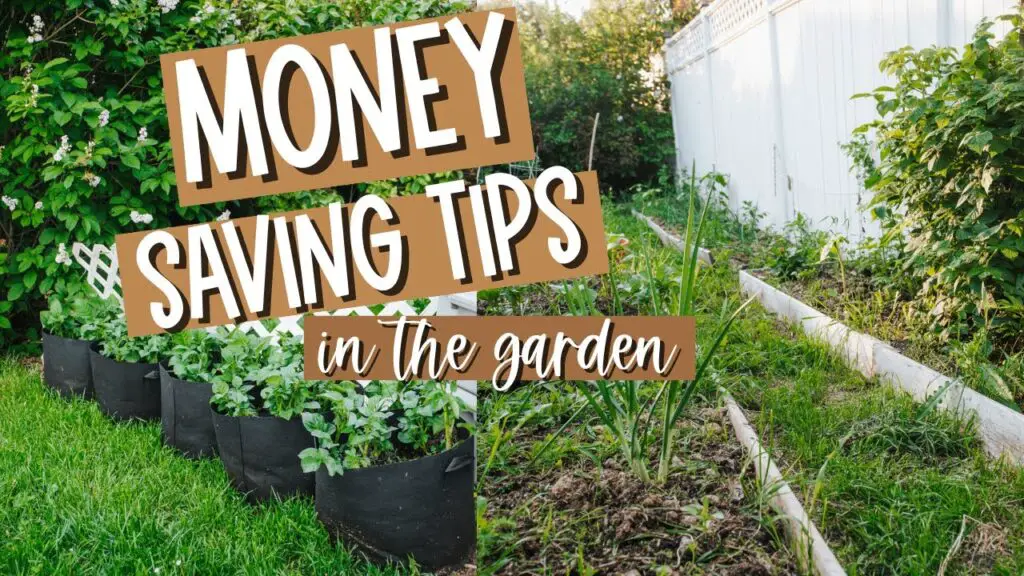
Water Conservation Methods
Collecting rainwater
One of the most effective ways to conserve water and reduce your water bill is by collecting rainwater. Instead of relying solely on your tap water for irrigation, you can set up a rain barrel or a rainwater harvesting system to collect rainwater and use it to water your garden. This not only helps you save money, but it also reduces the strain on local water sources.
Drip irrigation systems
Another great water-saving technique is to install a drip irrigation system in your garden. Unlike traditional sprinklers or hoses, drip irrigation delivers water directly to the plant roots, minimizing waste and evaporation. By using a drip system, you can ensure that your plants receive the right amount of water without overwatering, leading to healthier and more productive plants.
Smart watering techniques
To further save water, it’s important to implement smart watering techniques. This includes watering your plants during the early morning or late evening, when evaporation rates are lowest. It’s also crucial to water the base of the plants rather than overhead, as this reduces water loss due to evaporation. Additionally, regularly checking the soil moisture level and only watering when necessary will help prevent water waste.
By incorporating these water conservation methods into your gardening routine, you can significantly reduce your water consumption and save money on your monthly water bill. Not only that, but you’ll also contribute to the preservation of our precious water resources.
Remember, gardening doesn’t have to break the bank. By implementing frugal gardening practices, you can enjoy the benefits of growing your own food while saving money. So why not give these water conservation methods a try? Your wallet and the environment will thank you.
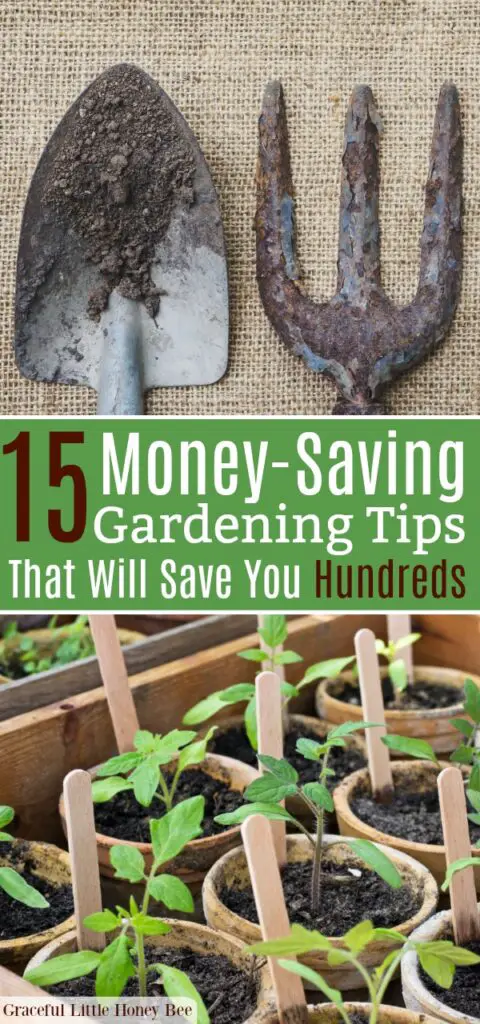
Frugal Seed and Plant Sourcing
One of the most exciting aspects of frugal gardening is the ability to source your own seeds and plants. By doing so, you can save a substantial amount of money while still enjoying a bountiful garden. In this section, I will discuss three valuable methods of frugal seed and plant sourcing.
Saving and Exchanging Seeds
One of the easiest ways to save money on seeds is by collecting and saving them from your own plants. At the end of each growing season, I take the time to carefully collect and store the seeds from the plants I want to grow again. This simple act of seed saving not only saves me money but also ensures that I have access to the specific varieties I love.
Another frugal option is to exchange seeds with fellow gardeners. Through seed exchanges, I have discovered unique and rare varieties that I would never have found in traditional seed catalogs. Joining local gardening groups or online communities dedicated to seed swapping can provide you with a wide selection of seeds at no cost.
Propagating Plants from Cuttings
Rather than buying new plants, propagating them from cuttings is a fantastic way to save money. I love taking cuttings from my healthy plants and allowing them to grow roots in water or a rooting medium. This method is particularly useful for herbs, succulents, and many other types of plants. Plus, it’s incredibly satisfying to watch your cuttings transform into vibrant new plants right before your eyes.
Utilizing Seed Swaps and Community Gardens
Another excellent option for frugal gardeners is participating in seed swaps and community gardens. Seed swaps provide an opportunity to trade your surplus seeds with others, allowing you to diversify your garden without spending extra money. Additionally, many communities offer shared garden spaces where you can grow your own produce at a fraction of the cost. These communal gardens not only save money on land and resources but also foster a sense of community and sharing.
By exploring these frugal seed and plant sourcing methods, you can significantly reduce your gardening expenses while still enjoying a flourishing garden. So go ahead, try your hand at seed saving, propagate some new plants from cuttings, and join a seed swap or community garden to expand your plant collection without breaking the bank. Happy gardening!
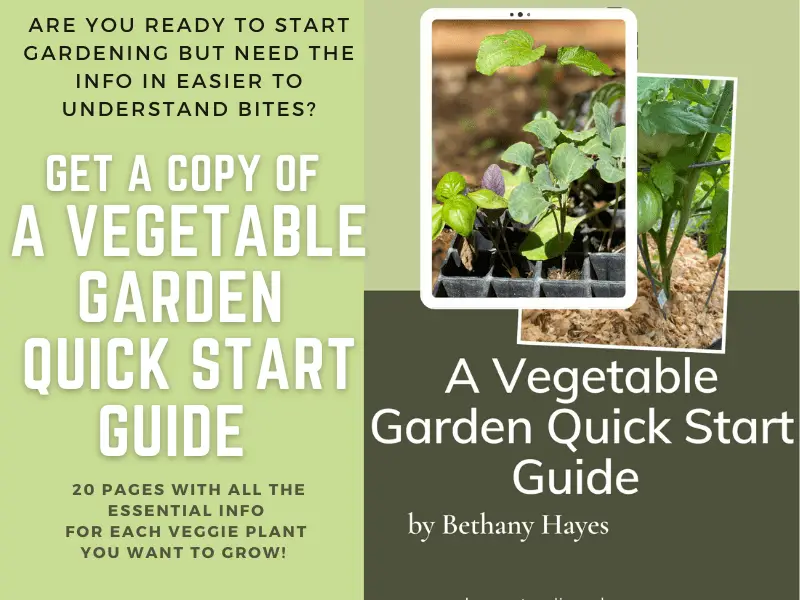
Implementing Space-Saving Techniques
One of the best ways to save money while gardening is by implementing space-saving techniques. These techniques not only help you maximize your yield but also ensure that you make the most of the available space in your garden. Here are three space-saving techniques that you can easily implement:
Container gardening
Container gardening is a fantastic option for frugal gardeners with limited space. By using containers such as pots, buckets, or even old tires, you can grow a wide variety of plants, including herbs, vegetables, and even small fruit trees. The best part is that containers can be placed anywhere – on balconies, patios, or even rooftops. Just make sure to choose containers with good drainage and provide ample sunlight for your plants to thrive.
Vertical gardening
Vertical gardening is another space-saving technique that allows you to grow plants vertically, using walls, trellises, or fences. By utilizing vertical space, you can grow climbing and vining plants like tomatoes, cucumbers, and beans without taking up a significant amount of ground space. Plus, it adds an aesthetic touch to your garden. Remember to provide appropriate support for these plants to climb and ensure they receive enough sunlight.
Intercropping and companion planting
Intercropping and companion planting are techniques where you grow different plants together to maximize space and enhance productivity. Certain plants have mutually beneficial relationships, where one plant can repel pests or provide necessary nutrients to the other. For example, planting basil next to your tomatoes can deter pests, while planting marigolds near your vegetables can help repel insects. Intercropping can also help to maximize the use of nutrients and water in the soil.
By implementing these space-saving techniques in your garden, you can save money, make the most of your available space, and enjoy a bountiful harvest. So, grab your containers, get creative with vertical structures, and try intercropping and companion planting to create a thriving and frugal garden. Happy gardening!
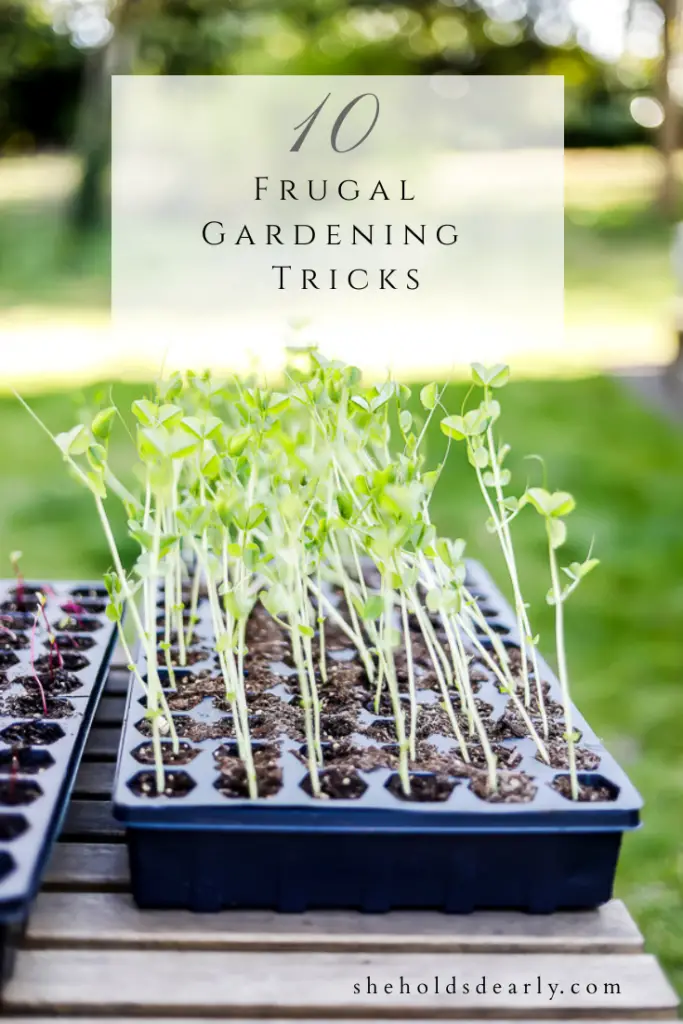
Natural Pest Control
Identifying common garden pests
One of the challenges that gardeners face is dealing with pests that can damage their plants. However, there are natural and frugal ways to control these pests without resorting to expensive chemical treatments. By identifying common garden pests, I can take the necessary steps to prevent damage to my plants and save money in the long run.
Non-toxic homemade pest repellents
Instead of reaching for store-bought pest repellents that can put a dent in my gardening budget, I have discovered that I can make my own non-toxic repellents using simple ingredients from my pantry. For instance, I mix water and dish soap to create a spray that effectively repels aphids. Another option is to sprinkle crushed eggshells around my plants to deter slugs and snails. These homemade remedies not only save me money but also ensure that my garden remains free from harmful chemicals.
Encouraging beneficial insects
In my quest to save money and maintain a healthy garden, I have learned the importance of attracting beneficial insects. These include ladybugs, lacewings, and bees, which act as natural predators to common garden pests. To attract them, I plant flowers that provide nectar and pollen, such as marigolds and lavender. I also provide shelter for these insects by incorporating plants like yarrow and dill into my garden. By encouraging beneficial insects, I can reduce the need for chemical pesticides and promote a balanced ecosystem in my garden.
by implementing these natural pest control methods, I am able to protect my plants without breaking the bank. Identifying common garden pests allows me to proactively address their presence, while non-toxic homemade pest repellents offer a cost-effective alternative to store-bought treatments. Additionally, attracting beneficial insects helps maintain a healthy garden and reduces the reliance on chemical pesticides. By following these frugal gardening tips, I can enjoy a thriving garden while saving money in the process.
Harvesting and Preserving Produce
Optimal harvesting techniques
When it comes to frugal gardening, one of the most rewarding aspects is enjoying the fruits of your labor. To make the most of your harvest, it’s important to employ optimal harvesting techniques. This ensures that you maximize the yield from your garden and minimize wastage.
To start, I suggest harvesting your produce at the peak of ripeness. This guarantees the best flavor and nutritional content. It’s also essential to learn the proper way to pick different types of fruits and vegetables. For instance, delicate items like tomatoes should be gently twisted or snipped from the vine, whereas root crops like carrots and potatoes require digging around the base to prevent damage.
Home canning and preserving
Once you’ve harvested your bountiful garden, the next step is to preserve your produce to enjoy throughout the year. Home canning is a fantastic way to extend the shelf life of your fruits and vegetables. This frugal technique allows you to control the ingredients and avoid preservatives commonly found in store-bought canned goods.
To get started, gather canning jars, lids, and boiling equipment. Choose recipes that match the type of produce you have, whether it’s salsa, pickles, or jam. Follow proper canning procedures to ensure your goods remain safe to eat. Plus, don’t forget to label and date your jars for easy identification in the future.
Freezing and dehydrating methods
Another frugal preservation method is freezing your harvest. Simply blanch vegetables like beans and peas before freezing to retain their color, texture, and flavor. For fruits, wash, dry, and freeze them in a single layer before transferring them to freezer-safe containers or bags. This way, you can enjoy your freshly picked produce even during the winter months.
Dehydrating your surplus fruits and vegetables is yet another excellent method of preservation. Invest in a food dehydrator or use your oven on low heat to slowly remove the moisture from your produce. Dried foods can be stored in airtight containers and will last for months.
By effectively harvesting and preserving your produce, you can make the most of your frugal gardening journey. Not only will you save money by avoiding costly store-bought items, but you’ll also savor the taste of freshly harvested food all year round. So, roll up your sleeves and get ready to reap the rewards of your frugal garden!
Sharing Your Garden Surplus
Neighborhood sharing initiatives
One of the joys of gardening is being able to harvest a bountiful crop. However, sometimes we end up with more produce than we can consume ourselves. Instead of letting it go to waste, why not share it with your neighbors? Neighborhood sharing initiatives are a fantastic way to connect with your community and ensure that excess food doesn’t go unused.
Start by spreading the word in your neighborhood about your garden surplus. You can create a sign, announce it in a community newsletter, or even use online platforms to reach out to your neighbors. Set a specific day and time for people to come and pick up the produce they need. This not only reduces food waste but also promotes a sense of community and helps foster relationships among neighbors.
Donating to local food banks
Another great way to share your garden surplus is by donating it to local food banks or soup kitchens. Many organizations are in constant need of fresh and nutritious produce to provide for those in need. By donating your excess fruits and vegetables, you are not only reducing food waste but also making a positive impact in your community.
Contact your local food bank or soup kitchen to inquire about their donation policies and find out if they accept fresh produce. Some may have specific guidelines on what they can or cannot accept, so it’s essential to check beforehand. Donating to these organizations ensures that your garden surplus reaches those who need it most.
Organizing produce swaps
If you’re interested in diversifying your garden produce, consider organizing produce swaps with other gardening enthusiasts in your community. This is an excellent opportunity to trade your surplus crops for something you may not have grown yourself, allowing you to taste a variety of fresh fruits, vegetables, and herbs without spending extra money.
To organize a produce swap, reach out to local gardening clubs or post in community forums to find like-minded individuals. Decide on a central location and establish a time for everyone to bring their excess produce to trade. These swaps not only save you money but also contribute to forming a supportive and collaborative gardening community.
By sharing your garden surplus through neighborhood initiatives, donating to local food banks, and participating in produce swaps, you not only reduce food waste but also make a positive impact in your community. These are just a few ways to share your love of gardening while also practicing frugality. So why not spread the joy of fresh produce with those around you?
Maximizing Year-Round Yields
Extending the growing season
As a frugal gardener, maximizing your year-round yields is the key to saving money on groceries. One way to achieve this is by extending the growing season. By taking advantage of early spring and late fall, you can enjoy fresh produce for a longer period of time.
To extend the growing season, consider using season-extending techniques such as row covers, cold frames, or high tunnels. These protective structures help trap heat and keep your plants warm during cooler temperatures. Planting cold-tolerant crops, like kale and brussels sprouts, can also help you continue harvesting throughout the colder months.
Indoor gardening during winter
During the winter months, when outdoor gardening may not be possible, indoor gardening can be a lifesaver. Utilizing windowsills, grow lights, or even a small greenhouse, you can continue growing herbs, salad greens, or even small vegetables. This allows you to enjoy fresh produce without having to rely on store-bought alternatives.
When indoor gardening, pay attention to proper lighting and temperature control. Different plants have different light and temperature requirements, so make sure to research and choose varieties that are suitable for indoor cultivation.
Cold storage for long-lasting produce
Another way to maximize your frugal garden’s yields is by implementing proper cold storage techniques. By storing excess produce, such as root vegetables, in a cool and dark place, you can extend their shelf life and ensure that none of your hard-earned harvest goes to waste.
For optimal cold storage, consider utilizing a root cellar, basement, or even a dedicated refrigerator drawer. Make sure to clean and prep your produce before storage, and regularly check for any signs of spoilage to remove any affected items promptly.
By adopting these frugal gardening strategies, you can maximize your year-round yields, save money on groceries, and enjoy the fruits (and vegetables!) of your labor for months on end. So go ahead, embrace your green thumb, and start reaping the financial benefits of growing your own food. Happy gardening!
Frugal Garden Maintenance
DIY garden tools and equipment
As a frugal gardener, I always look for ways to save money while achieving a bountiful harvest. One fantastic strategy that has worked wonders for me is creating my own garden tools and equipment. Instead of splurging on expensive tools at the garden store, I have discovered that many essential gardening tools can be easily made at home with just a little creativity and resourcefulness. For instance, I have crafted my own sturdy plant markers using popsicle sticks and a permanent marker. I have also repurposed old wooden pallets to create a functional and aesthetically pleasing compost bin. These DIY projects not only save me a significant amount of money but also add a personal touch to my garden.
Plant maintenance on a budget
Maintaining healthy plants and preventing pest infestations is crucial for successful gardening, but it doesn’t have to break the bank. As a frugal gardener, I prioritize natural and cost-effective solutions to keep my plants thriving. Instead of expensive chemical fertilizers, I enrich my soil with homemade compost made from kitchen scraps and yard waste. This not only saves me money but also reduces my carbon footprint. Additionally, I employ companion planting techniques, such as growing marigolds to repel harmful insects or planting basil near my tomatoes to improve their flavor and deter pests. These simple yet effective strategies not only save me money but also help me cultivate a thriving and environmentally-friendly garden.
Repurposing materials for garden projects
When it comes to garden projects, repurposing materials is both practical and economical. I love finding new uses for items that would otherwise end up in the landfill. For example, I have transformed old tire rims into beautiful flower beds, providing a unique focal point in my garden without spending a dime. I have also repurposed mason jars as charming and budget-friendly containers to start seeds indoors. By thinking outside the box and upcycling materials, I not only save money but also reduce waste and create a one-of-a-kind garden space.
By employing these frugal gardening tips, I have been able to save money while cultivating a lush and thriving garden. Through DIY projects, natural plant maintenance, and repurposing materials, I have found sustainable and cost-effective ways to enjoy the rewards of gardening without breaking the bank. So why not give these frugal gardening strategies a try and see how much you can save while beautifying your outdoor space? Happy gardening!
Conclusion
In conclusion, frugal gardening is an excellent way to save money while enjoying the benefits of a sustainable lifestyle. By implementing these 10 frugal gardening tips, you can easily grow your own food and cut down on expenses.
Frugal gardening comes with a multitude of benefits. Not only does it provide you with fresh and nutritious food, but it also allows you to take control of your own food production. By growing your own fruits and vegetables, you can ensure that no harmful chemicals or pesticides are used, resulting in healthier and tastier meals for you and your family. Additionally, gardening is a great stress-reliever and provides a sense of fulfillment and accomplishment.
Sustainable Lifestyle Choices
By embracing frugal gardening, you are choosing a more sustainable lifestyle. By reducing your reliance on store-bought produce, you are minimizing the environmental impact caused by transportation and packaging. Moreover, by composting kitchen scraps and using them as natural fertilizer for your garden, you are reducing waste and promoting soil health. Frugal gardening allows you to actively contribute to the health of the planet.
Saving Money while Enjoying the Harvest
One of the main advantages of frugal gardening is the significant cost savings. Buying fresh produce from the grocery store can be expensive, especially when fruits and vegetables are out of season. By growing your own food, you can slash your grocery bills and save money in the long run. Moreover, you can preserve excess harvest through canning, freezing, or drying, allowing you to enjoy homegrown produce even during the offseason.
In conclusion, frugal gardening is a practical and rewarding way to save money and embrace a sustainable lifestyle. By following these 10 frugal gardening tips, you can reap the benefits of growing your own food while contributing positively to the environment. Start your frugal gardening journey today and enjoy the delicious and cost-effective rewards it brings.

